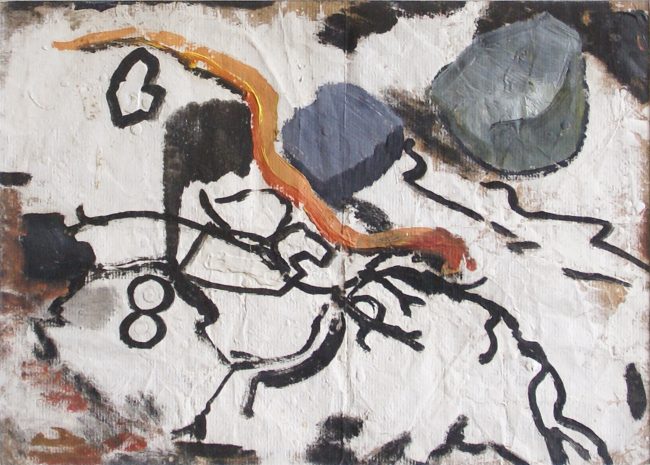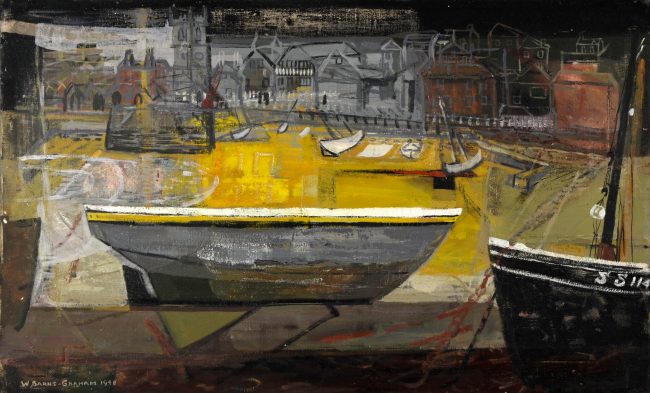Wilhelmina Barns-Graham in St Ives – A Developing Artist

Froth and Seaweed, 1945, Oil on paper, BGT1082
St Ives – Post War Years
By the mid-1940s it is clear that Wilhelmina Barns-Graham is regarded as a modernist by the more conservative, established St Ives artists. She becomes something of a go-between between the two groups, with Ben Nicholson, Barbara Hepworth and Nauma Gabo on the one hand, and the St Ives School of Artists who included Borlase Smart, Leonard Fuller and Moffat Linder. In her work she is exploring parts of St Ives that would be overlooked by most artists, such as the rubbish dump and seaweed on the shore. There is a growing simplification in her painting, forms pared down and oddly juxtaposed with each other. There is also a growing fantasy element in some of her work. This is best represented by Sleeping Town. When this painting was first exhibited in the summer of 1948 a reviewer in ‘The St Ives Times’ was prompted to say of Barns-Graham that she ‘paints [Cornwall] without compromise or fuss. She has found the foam lipped breakers, that grey light, nearly crumbling walls and rusted junk, she has found the soul of St Ives in her visionary Sleeping Town.’

Sleeping Town, 1948, Oil on canvas, BGT711
St Ives – The Sleeping Town
The painting is a wonderfully evocative image of St Ives, asleep because of the time of day and also in the silence of empty boats, waiting for the fishermen to return. One thinks of a fishing industry increasingly in decline that might ‘sleep’ forever. If the painting’s meaning is layered, so too is the artist’s activity. Through the surface paint ghostly images appear of a previous painting, or earlier stages of this. It is a confident palimpsest of impressions, a composite of a number of individual images the artist had explored before in drawings and paintings. The boats drawn up on the sand in the middle distance are no longer individual or specific: they have become signs, which represent the generic object and its form. Barns-Graham has evolved her own language of symbols that together signify her response not simply to the visible town, but to its physical character, its history and contemporary life. Her ability to identify with, and capture the essence of her subject led fellow artist and writer Sven Berlin, to hope that she would more often ‘allow herself to merge into Cornwall … For when she does this she creates a poetry that is moving and unpretentious. The world of her Sleeping Town with its gold and black, its ghostly white and shifting transparent forms, rehabilitates our belief in the fantasy of paint … and its potentiality of invention.’
